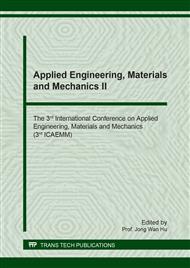p.311
p.316
p.323
p.328
p.333
p.338
p.344
p.349
p.354
Aligned Collagen Scaffolds Enhance Tenogenic Differentiation of Bone Marrow-Derived Stem Cells
Abstract:
Tendon repair remains a formidable challenge in clinic, due to its limited function in long-term recovery. Decellularized native tendon extracellular matrix (ECM), which contains specific bioactive factors and a large number of collagen fibers, seeded with bone marrow-derived stem cells (BMSCs) has been found to promote tendon neogenesis. However, the effect of arrangements of natural collagen fibers on the differentiation of BMSCs remains unclear. Here, we prepared aligned collagen fiber scaffolds from rat tail tendon ECM to investigate the effect of collagen arrangements on the morphology, proliferation and differentiation of rat BMSCs in vitro. It was found that BMSCs were elongated and aligned along the collagen fibers on the aligned collagen fibers. Furthermore, the aligned collagen scaffolds significantly enhanced the expression of tenocyte markers TNMD and THBS4. The results indicated that aligned collagen scaffolds could induce the tenogenesis of BMSCs, which would provide an alternative approach for tendon tissue engineering.
Info:
Periodical:
Pages:
333-337
Citation:
Online since:
July 2018
Authors:
Price:
Сopyright:
© 2018 Trans Tech Publications Ltd. All Rights Reserved
Share:
Citation:


